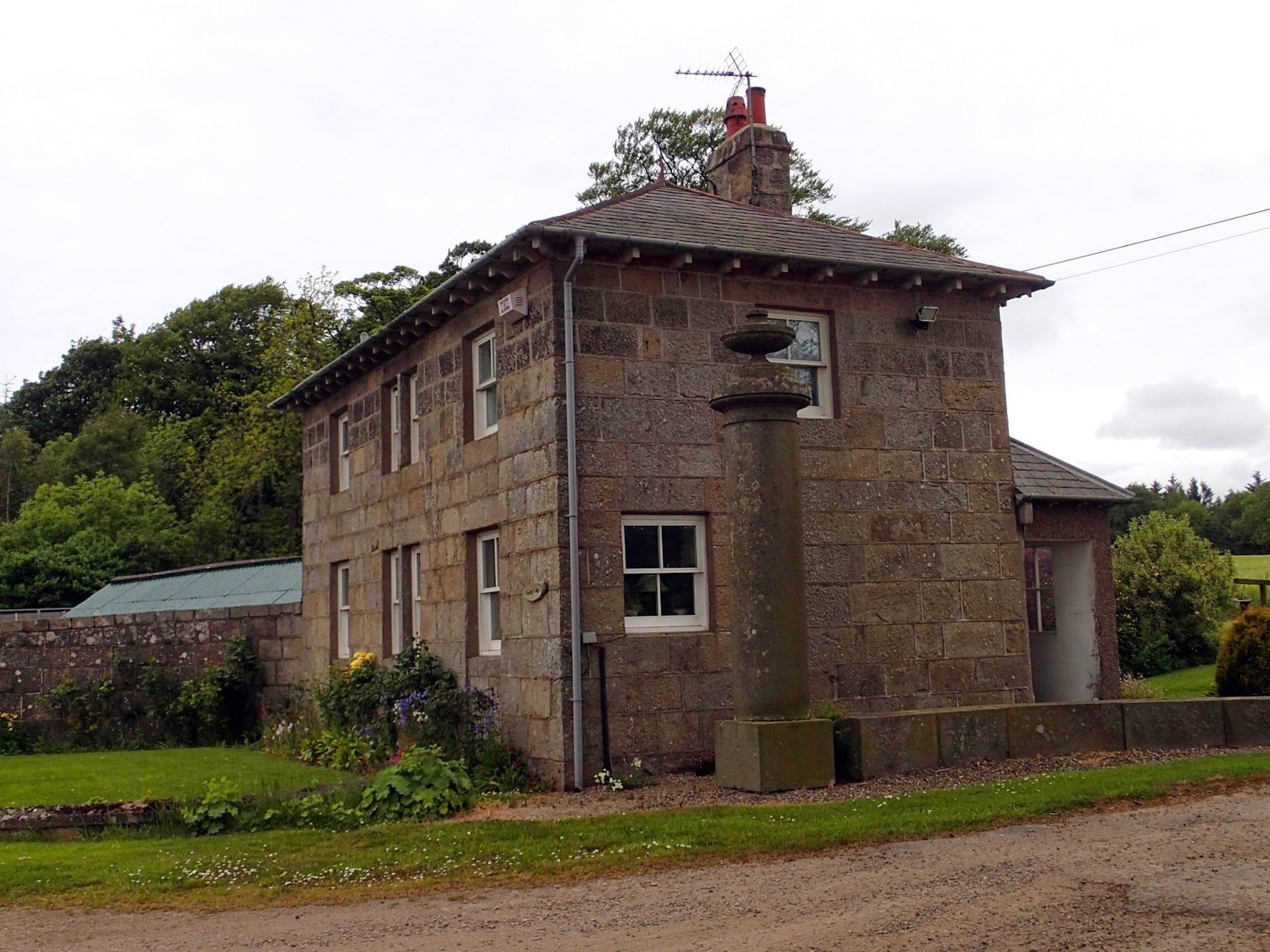The
railway line skirted the northern edge
of Mintlaw, the largest village on the Formartine Buchan Line. The station was situated about
half a mile to the west of the village, along what became Station Road, and was
more convenient for the estates of Aden and Pitfour than for the villages.
Housing, commercial and industrial developments have spread from the Station to
the village. Currently a new housing development is extending Mintlaw to the north of the Line. The Line passed under the main Fraserburgh to Ellon road
which since the removal of the road
bridge it is necessary to cross with care by the Happy Plant Garden and Gift Centre.
Mintlaw
village was established by James Ferguson MP around 1813 at the cross roads
of the
Aberdeen to Fraserburgh and Banff to Peterhead Turnpikes. This was the
year in which the stretch of turnpike from Ellon to Fraserburgh was opened. The
section of the Peterhead to Banff turnpike which runs through Mintlaw and
towards which James Ferguson, a County
Turnpike Trustee, subscribed £300 had been completed in 1807. Stands of trees,
particularly beeches dated from this period still line approaches to the village.
The crossroads became the centre of the
diamond shaped village 'square' which as
traffic has increased has become an uncomfortable hybrid between a traditional square surrounded by inns and shops and a
traffic island.
The
Mintlaw War Memorial now stands in the centre of the traffic island, it was
originally positioned in front of the Pitfour Arms and commemorates the dead of
both World Wars. The cost of the War Memorial, erected after WW1 was met by
public subscription which amounted to £242.9s.2d It has been claimed that the base of the
memorial was originally the base of one of the many statues in the Pitfour
Estate.
Looking south from the middle of the Square which as always has attractive floral displays towards the Pitfour Arms and South Street
The Village Hall on
the South side of the Square was built in the late 19th century following a
bequest and from local merchant Sylvester Davidson and donation from Charles
Farquhar the bank agent. In August 1921 Towards the end of his Lairdship the
last of the Ferguson Laird's of Pitfour, George Arthur Ferguson and his wife
Nina Maria held belated Diamond Wedding celebrations in the hall. Until very
recently there was been no church in
Mintlaw, increasing the importance of the hall as a meeting place.
Tea time commuter traffic heading along Station Road
Mintlaw was one of the communities to benefit from the generosity of James Mitchel, factor at Pitfour who left a bequest for the establishment of girls' schools in local communities including Mintlaw. The Mintlaw school was functioning by 1840, the mistress was provided with a two storey house and an annual salary of £15. Mitchel also provided a house for the master of the parish school. Mintlaw Primary
School with its distinctive checked frontage, originally a junior secondary school, opened on Longside Road in 1962
replacing an older school on Station road. A second new school, Pitfour Primary School opened in 1978 and Mintlaw Academy opened in 1981.
























